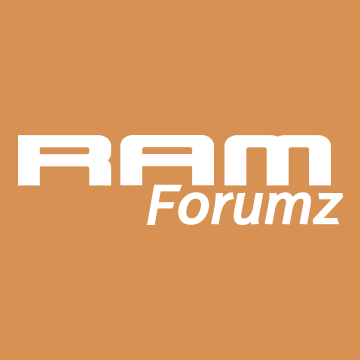Click here for Project Details outlined in Power Point
EDIT Dec 1, 2023: If you're reading this thread for the 1st time ... you can skip to post 91 for the solution to unlocking the SRT Dashboard and making Drive Modes work. Still working on Launch Control.
Drive Modes on a 2023 Tow & Go!
![Image]()
EDIT Mar 17, 2024: See post 177 for details on how to keep the dashboard from disappearing after some time
And see post 178 for details on getting the Tow & Go panel buttons to work along side the SRT drive mode functionality.
__
Considering the Tow-n-Go is essentially an SRT with a 5.7L engine instead of a 6.4L or SC 6.2L engine, I wonder if it would be possible to enable Launch Control. I realize the "Launch" surface button isn't present, but if it can be enabled in the PCM/BCM/ABS systems, I would expect the "Perf Control" (or something similar) to appear in the uConnect menus for accessing it.
I already have AlfaOBD and a communications cable, and I had a Tazer on my 2016 R/T, but it appears Tazer doesn't yet support uConnect 5 even with the security bypass module.
I don't yet have my 2023 TnG, as I ordered it last month and am still waiting, but am curious if this would even be possible once we take delivery of it.
So 1st question is: Has anyone used AlfaOBD on a 2023 model with the uConnect 5 system yet? Will it connect and allow changes or does it require an unlocked PCM (which hasn't yet been made available)?
@Duh-rango : I saw your post over at Challenger Talk, where you were able to get the performance pages and launch control working on your R/T manual transmission Challenger, great work and great info!
But it appears you had to use the Tazer for some of this process. While zAutomotive doesn't yet support the uConnect 5 system, I wonder if enabling of the drive modes might not be needed on a Tow-n-Go due to the nature of the TnG having many of the SRT features already. I also wonder if the Tow-n-Go already has the "SRT" flag set to "Yes" since it has the adaptive suspension along with Track mode already or if it's more like the Scat package where there would be a new value other than SRT (Maybe TNG or something?).
Of course, all of this would be a moot point if AlfaOBD requires an unlocked PCM ...
EDIT Dec 1, 2023: If you're reading this thread for the 1st time ... you can skip to post 91 for the solution to unlocking the SRT Dashboard and making Drive Modes work. Still working on Launch Control.
Drive Modes on a 2023 Tow & Go!
EDIT Mar 17, 2024: See post 177 for details on how to keep the dashboard from disappearing after some time
And see post 178 for details on getting the Tow & Go panel buttons to work along side the SRT drive mode functionality.
__
Considering the Tow-n-Go is essentially an SRT with a 5.7L engine instead of a 6.4L or SC 6.2L engine, I wonder if it would be possible to enable Launch Control. I realize the "Launch" surface button isn't present, but if it can be enabled in the PCM/BCM/ABS systems, I would expect the "Perf Control" (or something similar) to appear in the uConnect menus for accessing it.
I already have AlfaOBD and a communications cable, and I had a Tazer on my 2016 R/T, but it appears Tazer doesn't yet support uConnect 5 even with the security bypass module.
I don't yet have my 2023 TnG, as I ordered it last month and am still waiting, but am curious if this would even be possible once we take delivery of it.
So 1st question is: Has anyone used AlfaOBD on a 2023 model with the uConnect 5 system yet? Will it connect and allow changes or does it require an unlocked PCM (which hasn't yet been made available)?
@Duh-rango : I saw your post over at Challenger Talk, where you were able to get the performance pages and launch control working on your R/T manual transmission Challenger, great work and great info!
But it appears you had to use the Tazer for some of this process. While zAutomotive doesn't yet support the uConnect 5 system, I wonder if enabling of the drive modes might not be needed on a Tow-n-Go due to the nature of the TnG having many of the SRT features already. I also wonder if the Tow-n-Go already has the "SRT" flag set to "Yes" since it has the adaptive suspension along with Track mode already or if it's more like the Scat package where there would be a new value other than SRT (Maybe TNG or something?).
Of course, all of this would be a moot point if AlfaOBD requires an unlocked PCM ...




